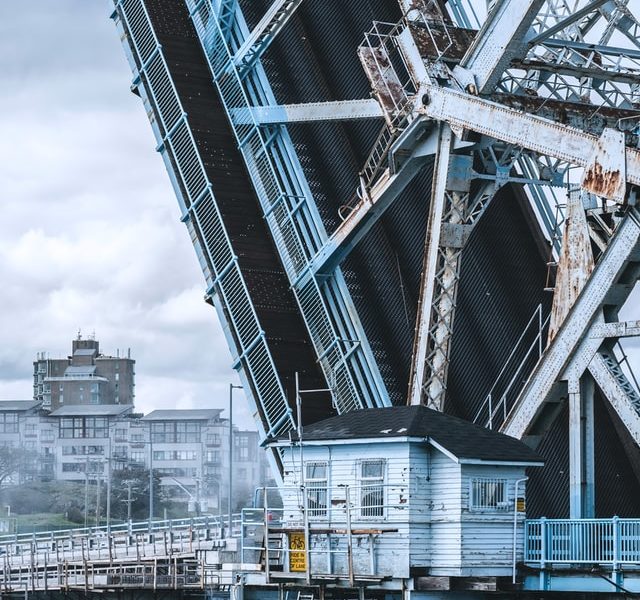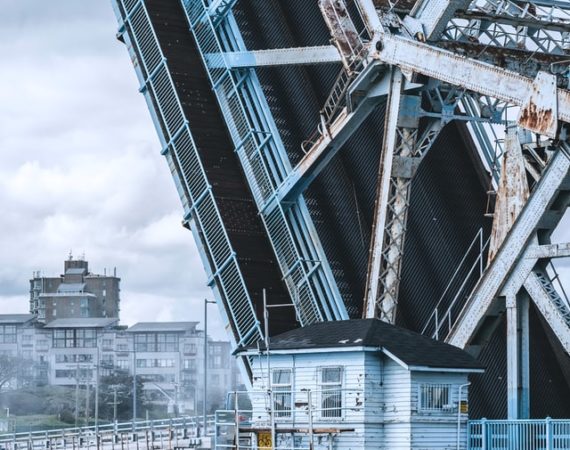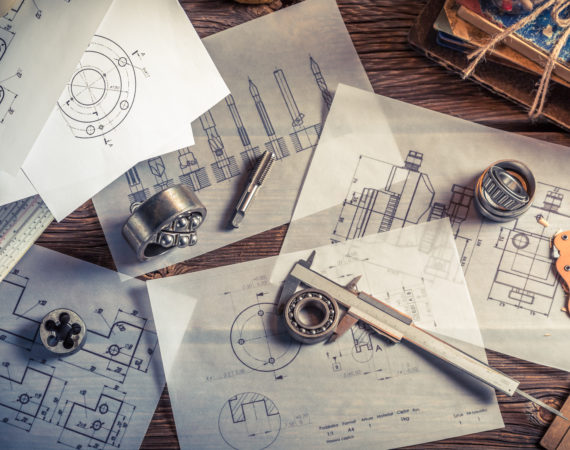How Movable Bridges Work
There are many different variations of a movable bridge, but they all have the same purpose; designed to move out of the way to allow the passage of boats or barges. Movable bridges obviously bring to mind “drawbridges”, however, there are other variations of movable bridges beyond just the drawbridge. In the U.S., certain regulations govern the operation of movable bridges such as how much advance notice is needed for water traffic, and hours of operation.
Why design movable bridges?
The biggest advantage is lower costs without high piers and long approaches. The most noted disadvantage is that traffic on the bridge must be stopped to provide passage for waterway traffic. Railway movable bridges that are used less often than vehicular bridges can be left open by default for waterway traffic until the railway is needed.
Bridge Operations
The operation of movable bridges can either be made with or without an engine depending on the size. For smaller bridges, the boat operator, Bridgeman, or remote camera and loudspeakers may operate the bridge movement. Bridges are powered by electric motors and could either be operated with gearing, winches, or hydraulic pistons. On some bridges, there are also traffic lights and moving barriers to guide vehicular and waterway traffic. The movable section of the bridge is restricted by cost and engineering restrictions no matter the length of the bridge.
Movable Bridges
Here are 16 variations of movable bridges including different versions of the drawbridge;
- Drawbridge – hinged bridge on one side
- Bascule Bridge – version of a drawbridge with a counterweight to assist with raising
- Folding Bridge – version of a drawbridge that uses multiple horizontal sections that collapse together
- Curling Bridge – version of a drawbridge that uses multiple sections that curl vertically
- Fan Bridge – version of a drawbridge with longitudinal sections between bascule sections that rise in different angles of elevation in the shape of a fan
- Vertical-lift Bridge – counterweight cables connected to a tower lift the bridge deck
- Table Bridge – a lifting mechanism mounted underneath the lift bridge
- Retractable Bridge – also known as a Thrust Bridge, this bridge deck is retracted to one side
- Submersible Bridge – also known as a ducking bridge, the deck of this bridge is lowered into the water
- Tilt Bridge – the bridge deck is curved and lifted at an angle with pivots at each end
- Swing Bridge – the bridge deck rotates around a fixed point
- Transporter Bridge – a very high structure such as a gondola that carries a segment of road suspended across the water
- Jet Bridge – an enclosed connector connects a passenger to an aircraft
- Guthrie Rolling Bridge – similar to a retracting bridge
- Floating Bridge – uses floats or shallow-draft boats to support the bridge deck
- Locks – used for raising and lowering watercraft between different levels of water on a river or canal
Forensic Engineering Specialists
Engineering Specialists Inc. has nearly 30 years of field experience in analyzing the damage to residential, commercial, and industrial buildings. We can work on any project in any state, nationwide. When you or your business needs to confirm the extent of damage or how to correct a problem, email us at office@esinationwide.com or call us, toll-free, at (877) 559-4010.




